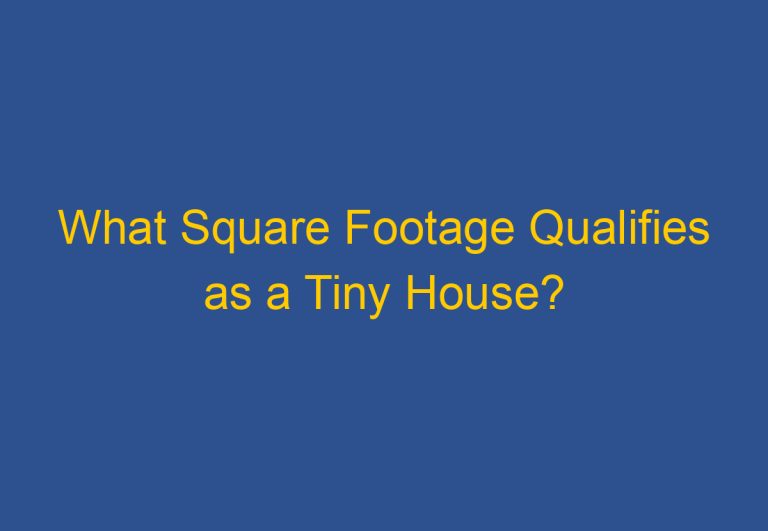What Are These Little Tiny Bugs in My House: Identification and Prevention Tips
Tiny bugs in the house can be a nuisance to homeowners. They can be found in different areas of the house, including the kitchen, bathroom, and bedroom. These tiny bugs can be difficult to identify, making it hard to know how to get rid of them.
Some of the most common tiny bugs found in homes include ants, cockroaches, bed bugs, and termites. Ants are usually found in the kitchen and can be identified by their small size and long antennae. Cockroaches are reddish-brown in color and have long antennae and oval-shaped bodies. Bed bugs are small, flat, and reddish-brown in color and are usually found in bedrooms. Termites are small, pale, and have straight antennae and a thick waist.
Identifying the tiny bugs in your house is the first step in getting rid of them. Once you know what type of bug you are dealing with, you can take the necessary steps to eliminate them. Some common methods of getting rid of tiny bugs in the house include using insecticides, traps, and natural remedies. It is important to keep the house clean and free of clutter to prevent these tiny bugs from making a home in your house.
Identifying Common Household Bugs
Physical Characteristics
Household bugs come in all shapes and sizes, ranging from tiny black bugs to larger cockroaches. Some bugs have wings, while others do not. Antennae are a common feature of many household bugs, and larvae may be present in some cases. It is important to note the physical characteristics of the bugs in order to properly identify them.
Common Habitats
Different types of household bugs prefer different habitats. Some bugs, like cockroaches and silverfish, thrive in warm, humid environments like kitchens and bathrooms. Others, like bed bugs and fleas, are found in bedding, carpets, and upholstery. Some bugs, like drain flies and fruit flies, prefer moist environments like drains and garbage disposals.
Signs of Infestation
There are several signs of a household bug infestation. These include seeing the bugs themselves, noticing their droppings, or finding damage to fabrics or other materials. In some cases, bites or skin irritation may be a sign of a bed bug or flea infestation. It is important to take action as soon as possible to prevent the infestation from spreading.
Some of the most common household bugs include ants, carpet beetles, mites, fruit flies, termites, weevils, stink bugs, spiders, centipedes, drain flies, fleas, aphids, and bed bugs. By understanding the physical characteristics and common habitats of these bugs, homeowners can better identify and prevent infestations.
Prevention and Control Strategies
Cleaning Practices
Keeping a clean house is the first step in preventing and controlling tiny bugs. Regularly clean and vacuum all surfaces, including floors, carpets, and furniture. Dusting and wiping down surfaces will remove dust bunnies and cobwebs that shelter these pests. Also, make sure to clean any spills or crumbs immediately, as these can attract bugs.
In addition to regular cleaning, washing clothes and linens can also help prevent bugs. Remove clothes from your closet and storage bins, and wash everything or send it to the dry cleaners. This will help eliminate any bugs that may have hitched a ride on your clothing.
Pest Control Solutions
If cleaning alone does not solve the problem, there are several pest control solutions that can be used. Traps can be effective in catching bugs, such as stink bugs. Fill a pan with 1 to 2 inches of water mixed with dish soap. Position a bright light (a clip-on shop light works well) so it shines down onto the bottom of the pan, creating a bright reflection. Stink bugs will fly toward the light and land in the water, where they drown.
Insecticides and sprays can also be used to control bugs, but they should be used with caution. Always follow the instructions on the label and use them in a well-ventilated area. Diatomaceous earth is a natural alternative to insecticides and can be sprinkled around the house to kill bugs.
Using sealed containers to store food can also help prevent bugs. Bugs are attracted to food, so keeping it in sealed containers will make it less accessible to them. Additionally, using a dehumidifier or removing sources of moisture can help prevent bugs that thrive in humid environments.
If all else fails, heat or freezing can be used to kill bugs. Place infested items in a hot car or in a freezer for several hours to kill the bugs. However, deep cleaning and vacuuming are still necessary to remove any dead bugs and prevent future infestations.
Overall, prevention and control of tiny bugs in the house requires a combination of cleaning practices and pest control solutions. By following these strategies, homeowners can keep their homes bug-free and comfortable.
Frequently Asked Questions
How can I identify the tiny bugs in my house?
Identifying tiny bugs in your house can be a challenging task. However, some common household bugs include silverfish, carpet beetles, bed bugs, and cockroaches. These bugs can vary in size, shape, and color. It is best to consult with a pest control professional or use online resources to help with identification.
What causes an infestation of small brown bugs in residential areas?
Small brown bugs can be caused by a variety of factors, including poor sanitation, moisture problems, and food sources. These bugs can also be brought into the home through infested items such as furniture, clothing, and luggage. It is important to practice good hygiene and keep the home clean to prevent infestations.
How can I eliminate tiny black bugs resembling poppy seeds from my home?
Tiny black bugs resembling poppy seeds can be eliminated by using insecticides, vacuuming, and sealing cracks and crevices. It is important to identify the type of bug to ensure proper treatment. Consult with a pest control professional for the best course of action.
What are the minuscule black bugs that appear similar to specks of dirt?
Minuscule black bugs that appear similar to specks of dirt can be springtails or mites. These bugs are commonly found in moist areas such as bathrooms and kitchens. Proper cleaning and maintenance can help prevent infestations.
Why has my house become a habitat for tiny, almost invisible bugs?
Tiny, almost invisible bugs can be attracted to a variety of factors, including moisture, food, and shelter. These bugs can enter the home through cracks and crevices, infested items, or even on pets. It is important to practice good hygiene and keep the home clean to prevent infestations.
What are the best methods for removing mites from a household environment?
The best methods for removing mites from a household environment include vacuuming, washing bedding and linens in hot water, and using insecticides. It is important to identify the type of mite to ensure proper treatment. Consult with a pest control professional for the best course of action.










